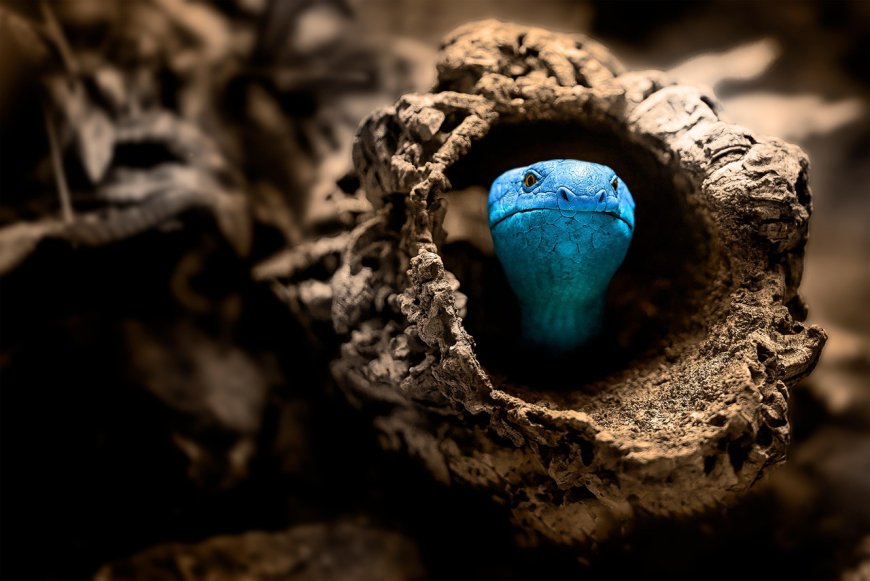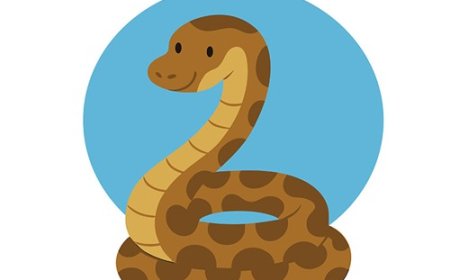Slithering Serpents: The Fascinating World of Snakes
Discover the amazing world of snakes—legless reptiles with powerful senses and unique hunting skills. Learn about their biology, behavior, and importance.

Introduction
Snakes are legless, cold-blooded reptiles that belong to the suborder Serpentes. With over 3,700 species
Physical Description
Snakes have long, cylindrical bodies covered in scales that help them move smoothly across different surfaces. Unlike most animals, snakes don’t have legs, eyelids, or external ears. They do have a forked tongue, which they flick in and out to "smell" the air by picking up scent particles. A snake’s body includes hundreds of vertebrae and ribs, making it incredibly flexible. Snakes range in size from the tiny thread snake (only a few inches long) to the massive reticulated python, which can grow over 30 feet long. Their skin colors and patterns can help camouflage them in the wild or warn predators to stay away.
Snakes are found on every continent except Antarctica. They live in a wide variety of environments—forests, grasslands, deserts, mountains, swamps, and even oceans (like the sea snake). Some snakes are arboreal, meaning they live in trees, while others are
Habitat and Distribution
Snakes have long, cylindrical bodies covered in scales that help them move smoothly across different surfaces. Unlike most animals, snakes don’t have legs, eyelids, or external ears. They do have a forked tongue, which they flick in and out to "smell" the air by picking up scent particles. A snake’s body includes hundreds of vertebrae and ribs, making it incredibly flexible. Snakes range in size from the tiny thread snake (only a few inches long) to the massive reticulated python, which can grow over 30 feet long. Their skin colors and patterns can help camouflage them in the wild or warn predators to stay away.
Diet and Hunting Behavior
Snakes are carnivores, which means they eat only other animals. Depending on the species, they might eat insects, frogs, birds, eggs, rodents, or even larger animals like deer. Snakes use two main hunting methods:
- Constriction – Snakes like boas and pythons wrap around their prey and squeeze until it suffocates.
- Venom injection – Snakes like cobras, vipers, and rattlesnakes use their fangs to inject venom that paralyzes or kills prey.
Reproduction and Lifecycle
Most snakes reproduce by laying eggs (oviparous), but some species give birth to live young (viviparous). Mating usually occurs in the spring, and after fertilization, female snakes either lay clutches of eggs or carry the developing young inside their bodies. The eggs hatch in a few weeks or months, depending on the species. Snake hatchlings are fully independent from birth—they don’t need parental care. Snakes grow by shedding their skin several times a year in a process called molting. Their lifespan varies widely: some live just a few years, while others—like large boas—can live over 20 years.

Behavior and Social Structure
Snakes are mostly solitary creatures and prefer to live and hunt alone. They are cold-blooded, meaning they depend on sunlight or warm surfaces to maintain their body temperature. Most snakes are active at dawn or dusk, but some are nocturnal or diurnal depending on their environment. Snakes communicate through body language and scent rather than sound. Some, like rattlesnakes make noise by shaking their tails as a warning to predators. When threatened, snakes may hiss, coil up, puff out their bodies, or play dead to defend themselves.
Conservation Status
While many snake species are common, others are endangered due to habitat loss, illegal pet trade, and fear-driven killing by humans. For example, the Saint Lucia racer is considered the rarest snake in the world. Conservation efforts include protecting habitats, educating the public, and enforcing laws against wildlife trafficking. Snakes are vital to the ecosystem, especially for
Cultural Significance
Snakes have a powerful presence in
Interesting Facts
- Snakes don’t have eyelids—they protect their eyes with a transparent scale.
- A snake's sense of smell is located on the roof of its mouth, using an organ called the Jacobson’s organ.
- Sea snakes can hold their breath for over 30 minutes.
- The king cobra is the longest venomous snake in the world.
- Some snakes, like coral snakes, have bright colors to warn predators of their venom.
- The boa constrictor and anaconda kill prey by squeezing, not with venom.
- Snakes can unhinge their jaws to swallow prey larger than their heads.
- Not all venomous snakes are dangerous to humans—some have mild venom or are very shy.
References
- National Geographic Kids – Snakes
- Smithsonian’s National Zoo – Reptile Facts
- Encyclopedia Britannica – Snake
- BBC Earth – Venomous and Constrictor Snakes
- Reptile Database – www.reptile-database.org


















































